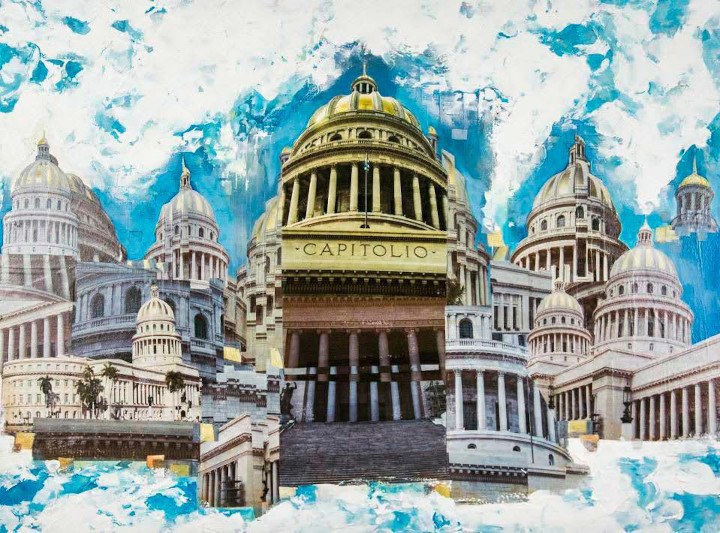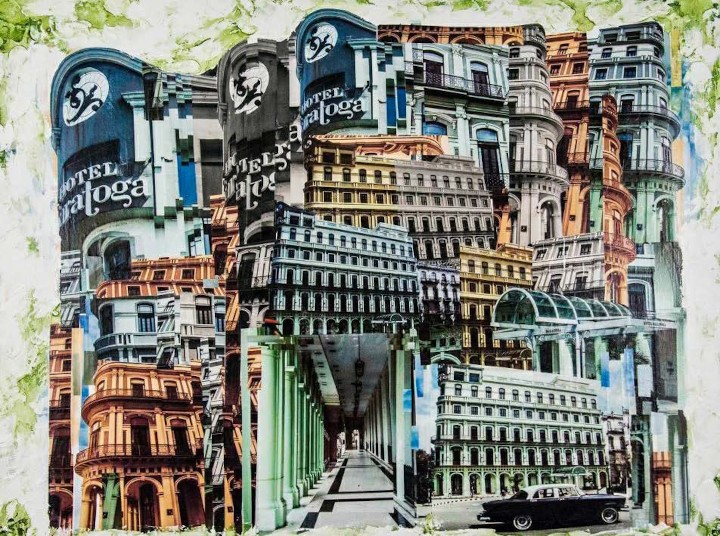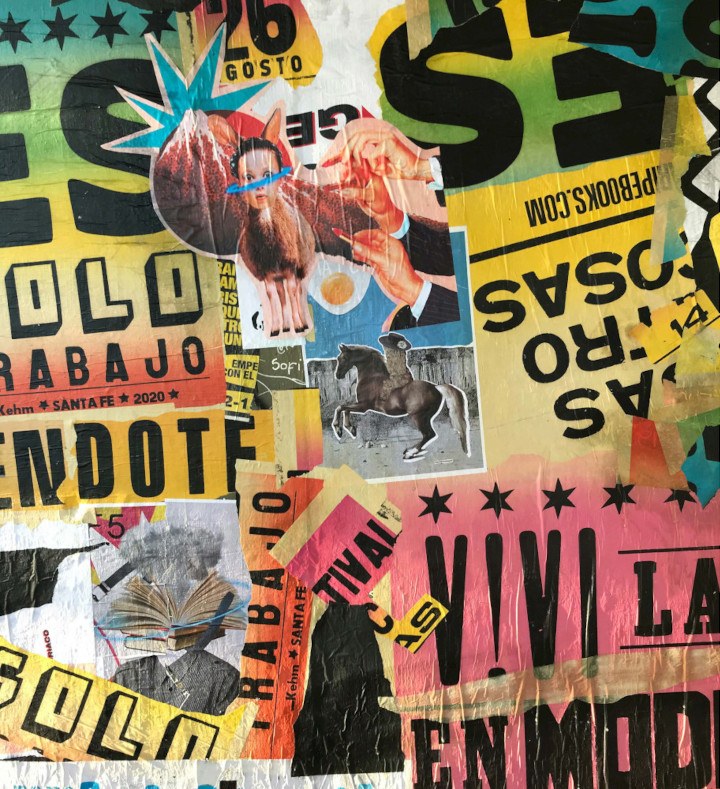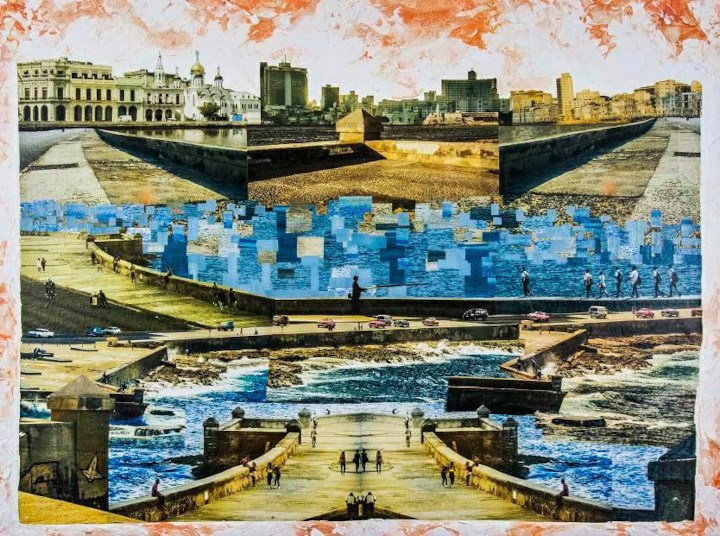WORDS: MIGUEL TERRY VALDESPINO, JOURNALIST AND WRITER
The great novelist Alejo Carpentier accurately named it “the City of Columns”, poet and journalist Gastón Baquero, in a juicy and lengthy essay, recounted it from its birth to its splendor, Los Zafiros quartet heard it in a moan of violins that only played for it, greatest Cuban filmmaker, Tomás Gutiérrez Alea, placed it in the volcanic center of his most memorable film and troubadour Gerardo Alfonso put it in rhythmic movement within a pentagram full of balconies with white sheets.
They were not the only ones to immortalize it since its foundation. Dozens of writers, playwrights, historians, filmmakers, painters, sculptors, photographers, journalists, essayists, troubadours… national and foreign have incorporated it into their creations in such a brilliant way that the attempt of visual artists Sonia Almaguer Darna and Denys San Jorge Rodríguez regarding their intention to offer in 15 pieces a different, innovative face of an equal number of memorable works of architecture that dignifies – and mythologizes, why not? and for the better – the capital city of the largest of the Antilles, even in the midst of deteriorations as painful as noticeable.
Sonia, although still very young, is an artist with a solid career in the field of photography, author of various exhibitions inside and outside the Island, with a special skill to show all shades of human behavior displayed on the theatrical scene or in more public spaces, as well as within certain spaces that seem to refer to those “little things” so intimate, so personal, so melancholic and non-transferable that Catalan Joan Manuel Serrat sang about.
One of the most acclaimed masters of photographic direction in cinema, Italian Vittorio Sttoraro, winner of three Oscars in this specialty, defined photography as “the literature of light”, understanding it as a “silent” expression that, when penetrating human retina, it begins to speak to us like any book, in a clear, precise and moving way about that reality trapped forever in the artist’s shutter.

Sonia shows that grace, not only when she portrays the settings and actors of a drama or a comedy or the protagonists of an event with deep popular roots, but when she notices the beauty in the most unnoticed details of a work eroded by time or for laziness. What others don’t look at, she knows how to look at… and catch.
Definitely, her photography can be as accurate when framing a great work of any artistic expression as it is when searching for the sublime in everyday life.
Denys San Jorge constantly moves within a wide creative range, which can include everything from the complete illustration – drawn in record time – of a cultural journalistic supplement to the writing of a short stories book or a substantial novel having more than five hundred pages. Putting first, of course, the main dish that nourishes his sensitivity as an artist every day: painting on the most unthinkable supports (canvas, cardboard, vinyl records…) and also photography, starring this, on many occasions, by an endless of images, concepts and humanist messages made from work tools inherited from his father, now deceased.
In this four-handed effort, Denys received top quality images from Sonia and then proceeded to complete a sort of second part that would not detract from the refinement of the material received, but would enrich and complement it in a harmonious and atypical way.
Both artists, in full professional maturity, seeking to refresh and illuminate their aesthetic discourse with more powerful lights, away from mimicry and replication, also delighted to explore Havana – and not only to explore it, but also to eternalize it from a new perspective. , they would end up completing their acclaimed exhibition “La Habana que me han da¨o, La Habana que te dejo”.

Both Sonia and Denys opted for a visual reinterpretation of some of the best-known and praised places of Havana architecture of all centuries, such as The Cathedral, the Nacional and Habana Libre hotels, the Focsa building,true institutions of the cultural history of the Caribbean nation, since, in addition to having witnessed some of the most remarcable ups and downs and dramas of domestic politics, they also hosted other stories, dalliances, especially attractive characters and celebrities, worthy of deserving more than a movie or a novel.
– If in charge of Sonia’s lens, with the close collaboration of Denys, the “capture” and printing of 15 monumental works had been carried out, by Denys – without Sonia ceasing to be an active part of this second step – the work was carried out pictorial, which included editing, contrast and composition until forming the collage that would become the original photos, now with a more colorful air and ready to be printed in the canvas format as well as in other formats.
Once all the exhibition has been enjoyed, I dare to assure that it also represents the most sincere tribute to a group of the most memorable Cuban architects, able, at the time, of happily assimilating the discourse of the architectural aesthetic avant-garde on an international scale. and apply it in a singular way, without struggles or grotesque caricatures to the context of our cities, especially Havana.
I have the impression that, at least among us, of the great creators of visual arts, architects are the least known, unlike the most important Cuban painters and sculptors, whose names we mention more frequently and promote with more enthusiasm in all our mass media. For this regrettable oversight, it is worth it that Sonia and Denys have reminded us, in an intelligent and elegant way, that true architecture should never travel in the freight car, but in first class.
Masters of architecture such as Joaquín Weiss, Eugenio Raynieri Piedra and Eugenio Raynieri Sorrentino, Eugenio Batista, Antonio Quintana Simonetti, Max Girona and Max Borges, among many others, were able to give the most glamorous, eclectic and multicultural city of Cuba a significant part of a seal that identifies and immortalizes it before the eyes of the world, and that stands before us, before the native, the stranger and the emigrant, with the clear intention of showing that for long years – and perhaps forever – the works shown in “La Habana que me han da¨o, La Habana que te dejo” will be simply unsurpassed.




